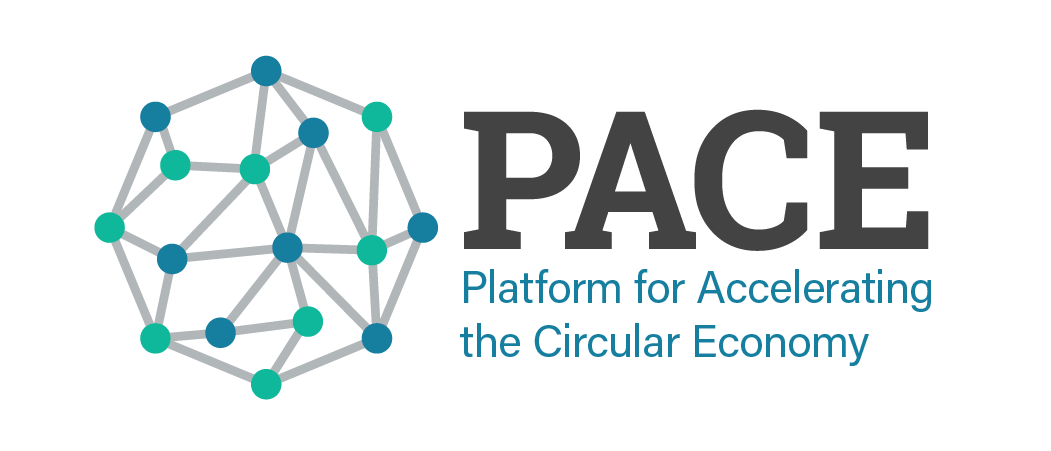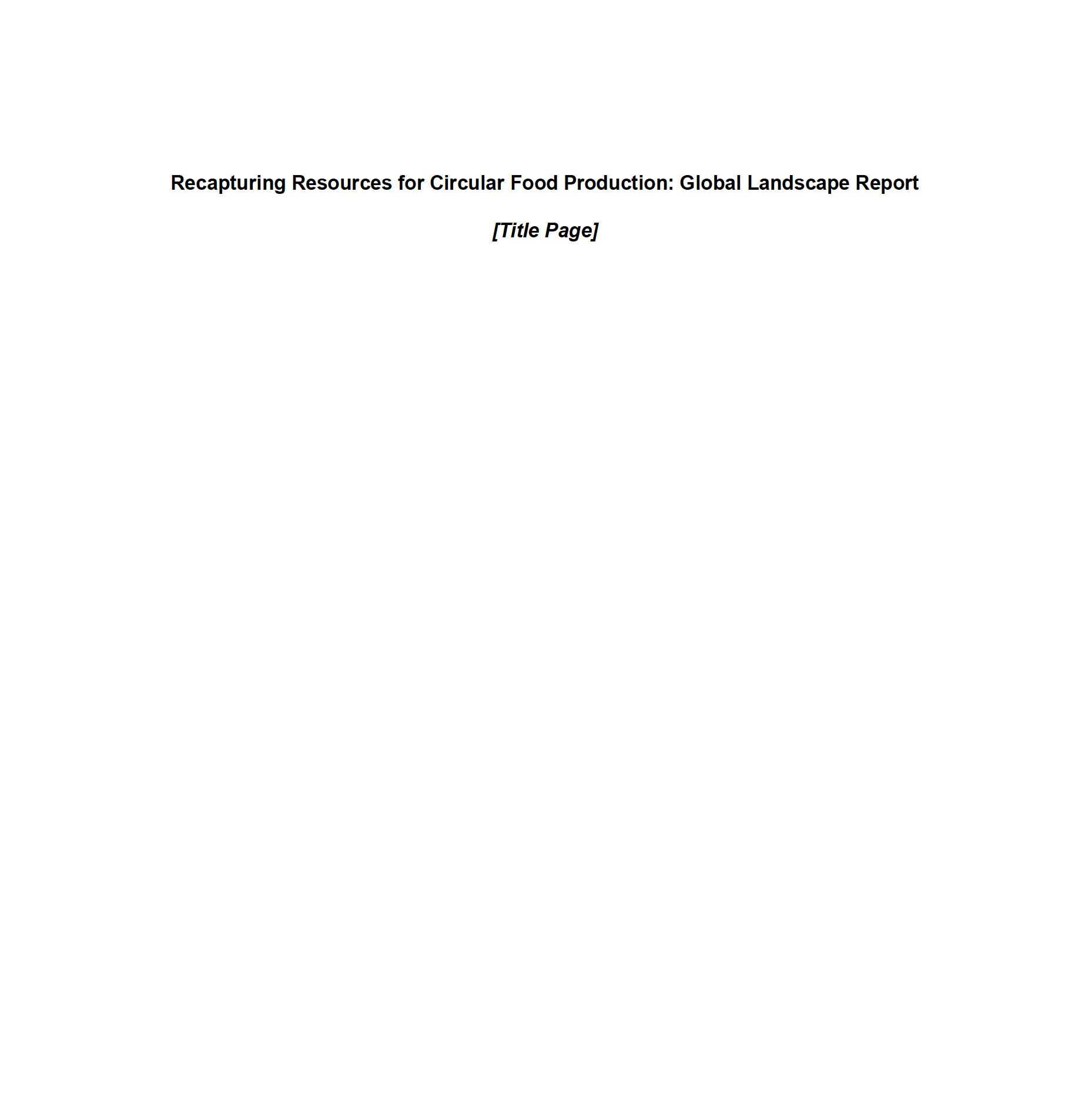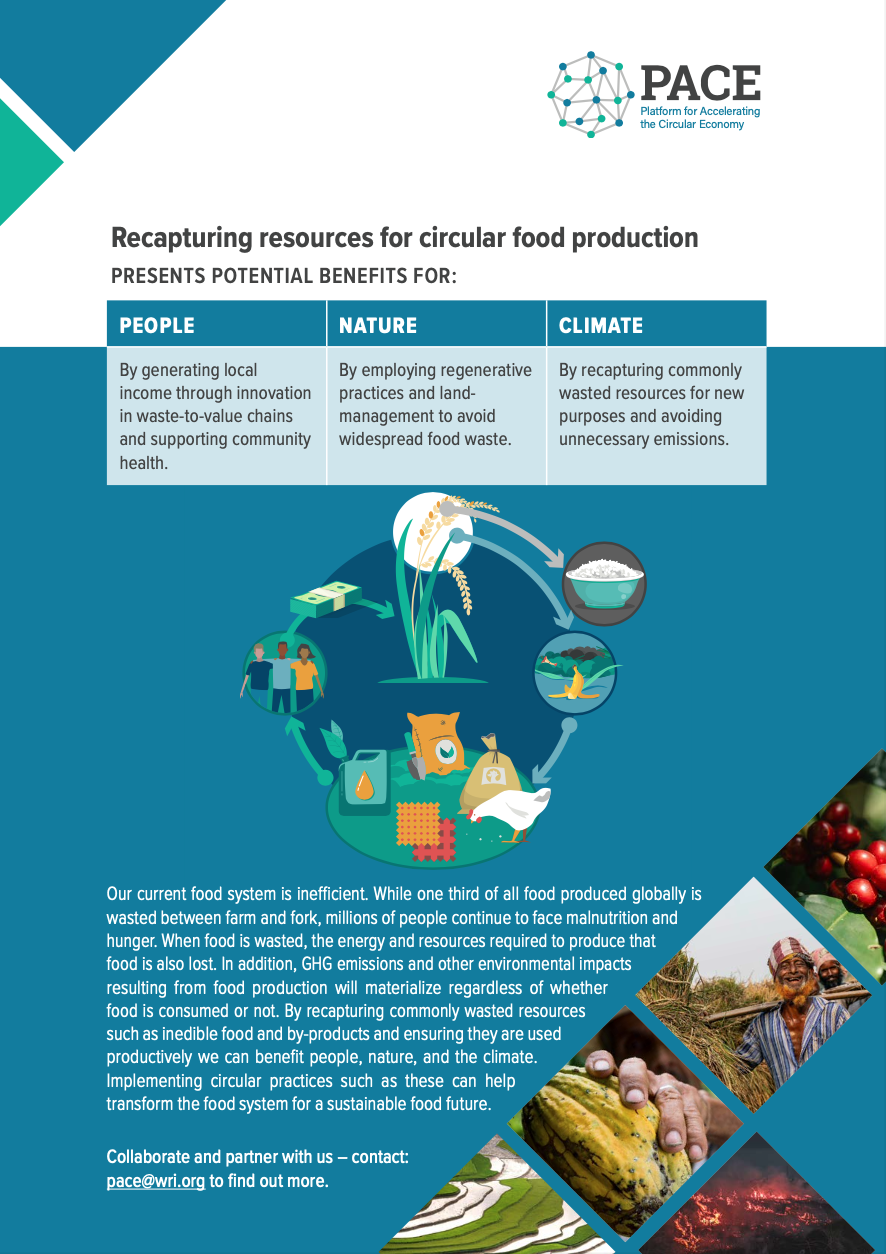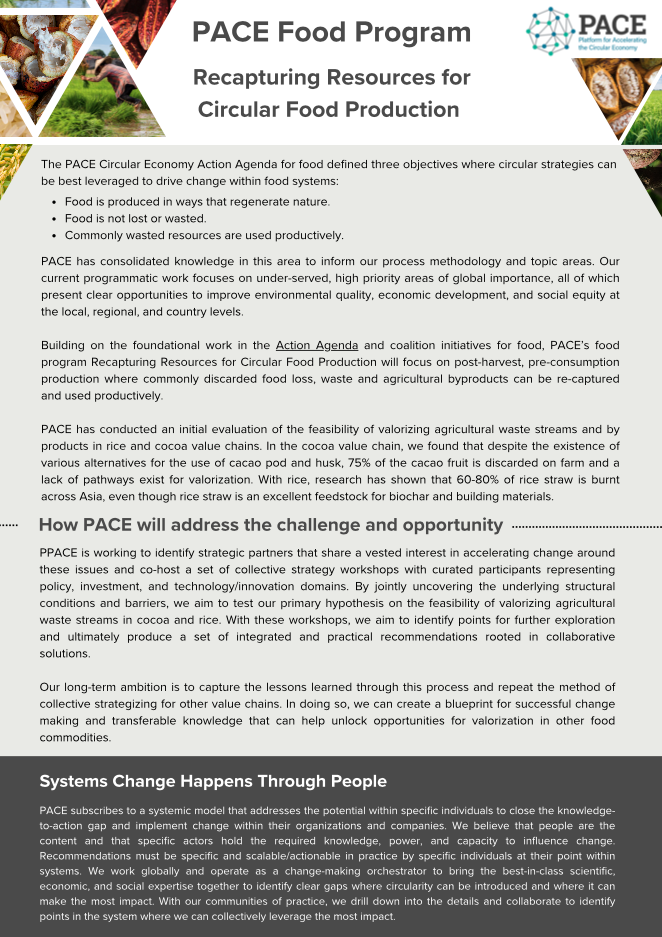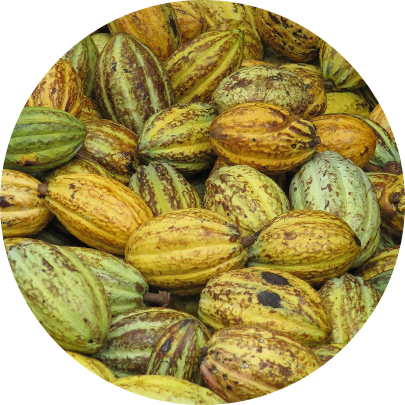
Page TItle
Recapturing resources for circular food production
Our current food system is inefficient. While one-third of all food produced globally is wasted between farm and fork, millions of people continue to face malnutrition and hunger. When food is wasted, the energy and resources required to produce that food are also lost. In addition, GHG emissions and other environmental impacts resulting from food production will materialize regardless of whether food is consumed or not. By recapturing commonly wasted resources such as inedible food and by-products and ensuring they are used productively we can benefit people, nature, and the climate. Implementing circular practices such as these can help transform the food system for a sustainable food future.
Our focus on critical food production systems stems from our key action agenda research in food as a broad sector. From this groundwork there has emerged a specific opportunity to single out action point 7 from the PACE action agenda for food:
‘7. Reframe Wasted Food and By-products as Valuable Resources. There are many productive uses for food waste, that also bring benefits to people and the planet—for example, as fertilizer, plastic or textile feedstock, and animal feed.’
PACE has now identified rice as a high-potential value chain for research and action based on its high volume of unavoidable food loss and waste in pre-consumer stages, the range of possible productive uses for the waste, and alignment with WRI’s focus on the circular economy for food.
In addition to rice, PACE has also identified cocoa as a high-potential value chain for research and action due to its significant rates of food loss (700,000 tons per year) and potential for increased efficiency and equity by way of circular practices.
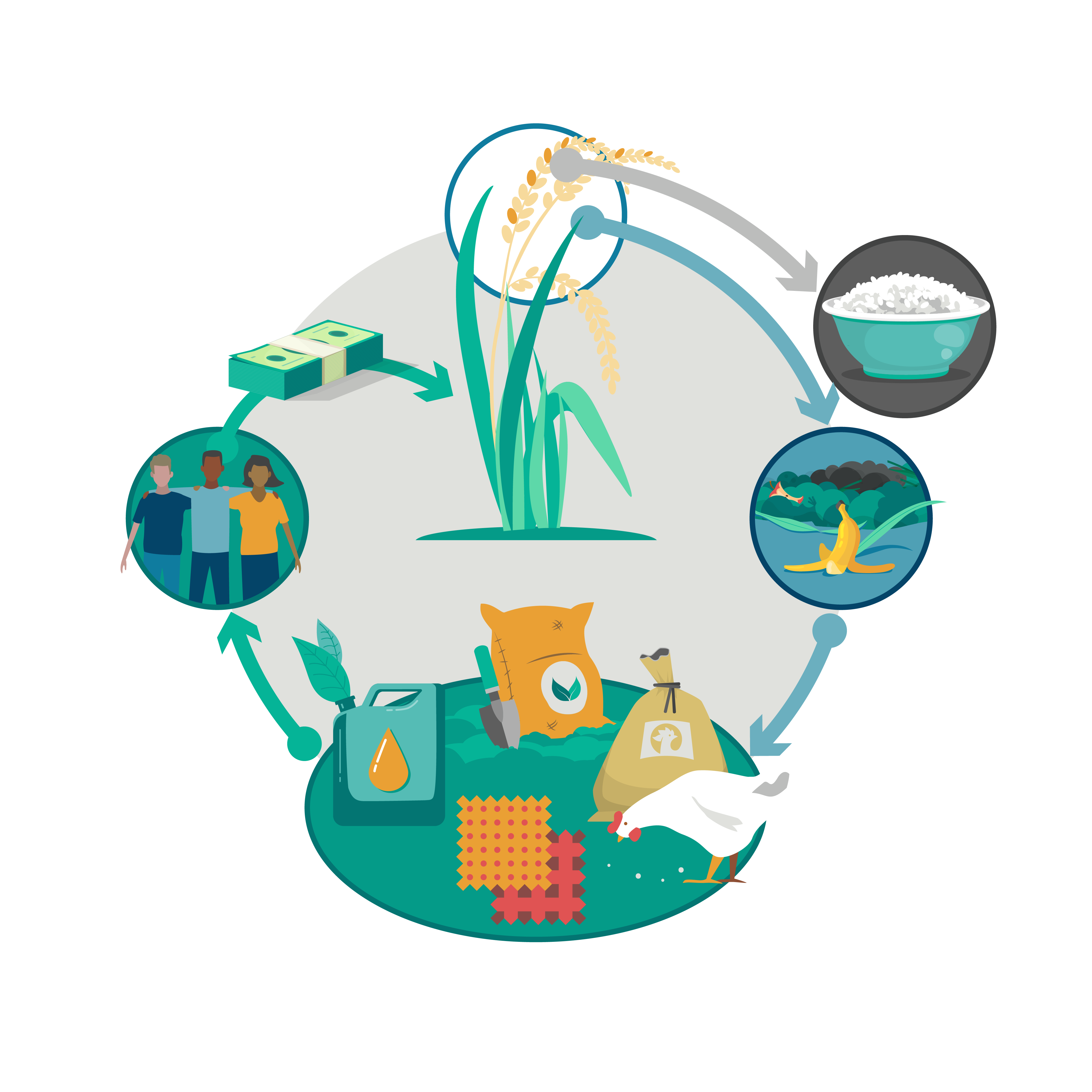
By focusing our attention on pre-consumer, production-stage intervention in these two value chains for food, PACE is now working to identify system acupuncture points where our platform can leverage key changemaker potential to embed circularity within specific intervention points to catalyze systemic change. If done effectively recapturing resources for circular food production can present key benefits for people, nature, and the climate in the following ways:
Key benefits
People
Unlocking the potential of commonly wasted resources is essential. Currently, less than 2% of valuable nutrients in food by-products and waste are recycled. By repurposing them as fertilizers, animal feed, or raw materials for textiles and plastics, we can stimulate innovation, open new avenues for business, and reduce environmental harm. This shift towards resource utilization presents immense opportunities for sustainability, employment, and economic prosperity.
Nature
Shifting towards regenerative food production is imperative. It requires re-evaluating what and how we cultivate. Currently, over 75% of our food is derived from only 12 plants and five animal species due to agricultural industrialization. Failing to address this issue has profound consequences for both human health and the planet. By diversifying agricultural systems and ensuring we achieve a mutually symbiotic relationship with nature, we can mitigate these risks and foster a more sustainable and resilient future.
Climate
Minimizing food loss and waste is crucial. At all stages, from field to fork, we must address the significant amounts of food currently lost. If food loss and waste were a country, it would rank as the world’s third-largest greenhouse gas emitter. By tackling this issue, we can make significant strides in mitigating climate change and creating a more sustainable future.
